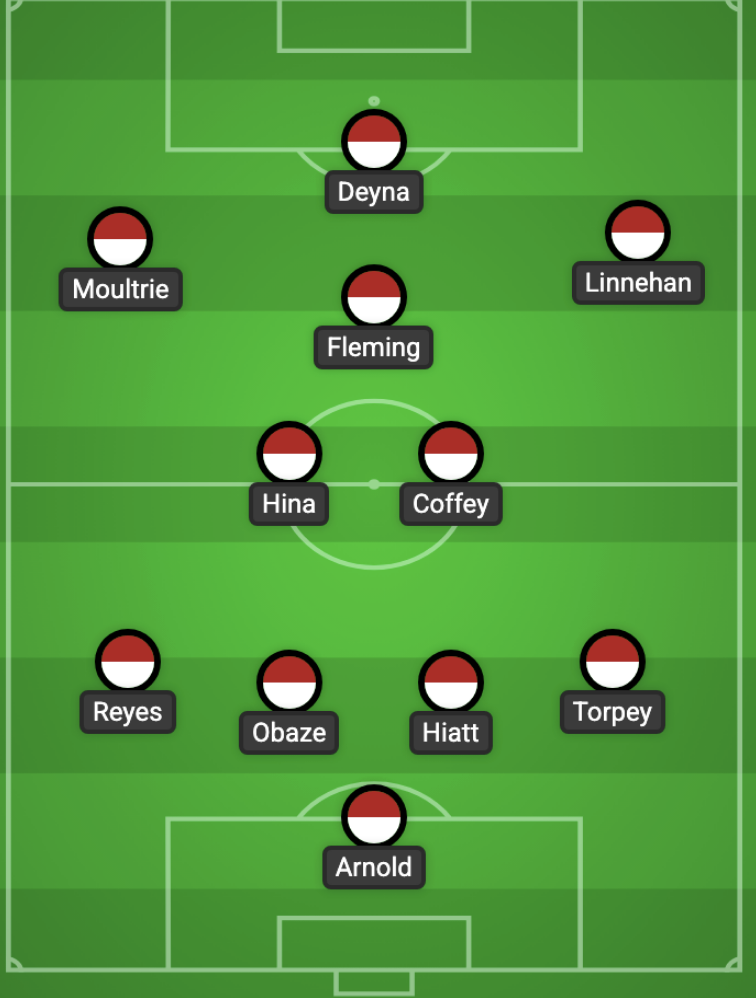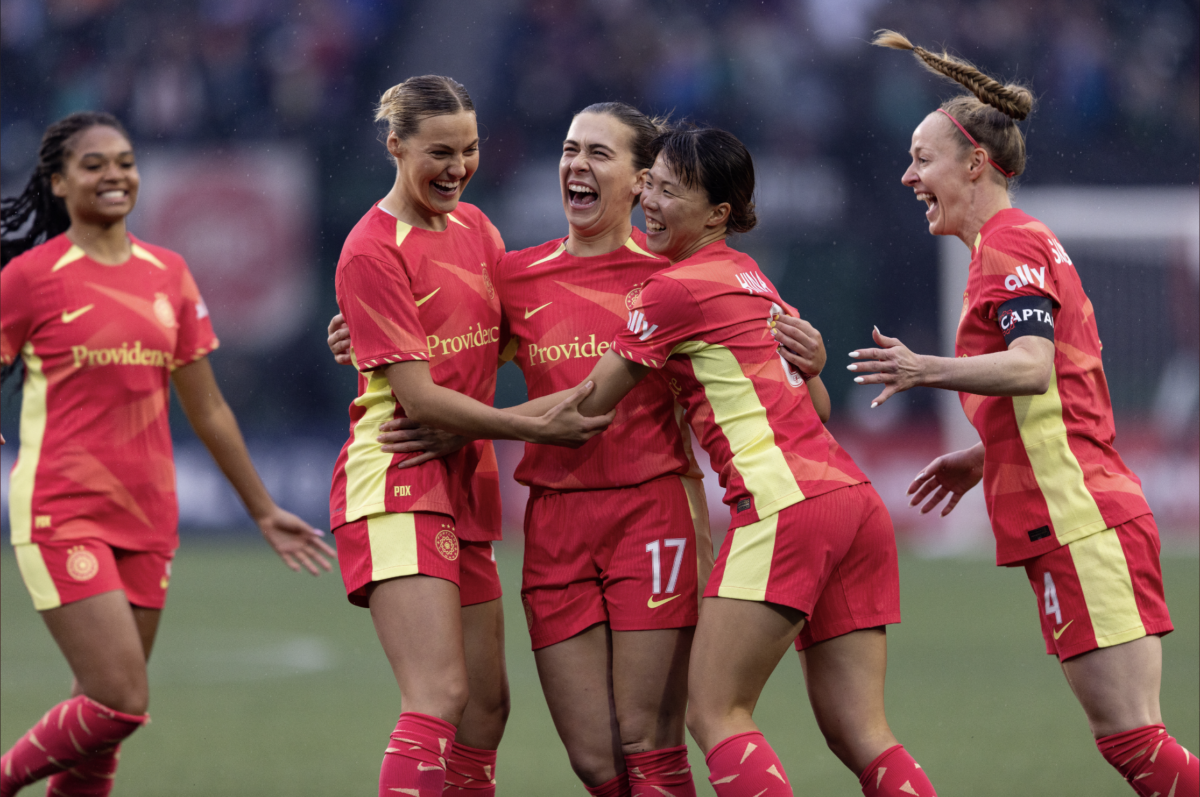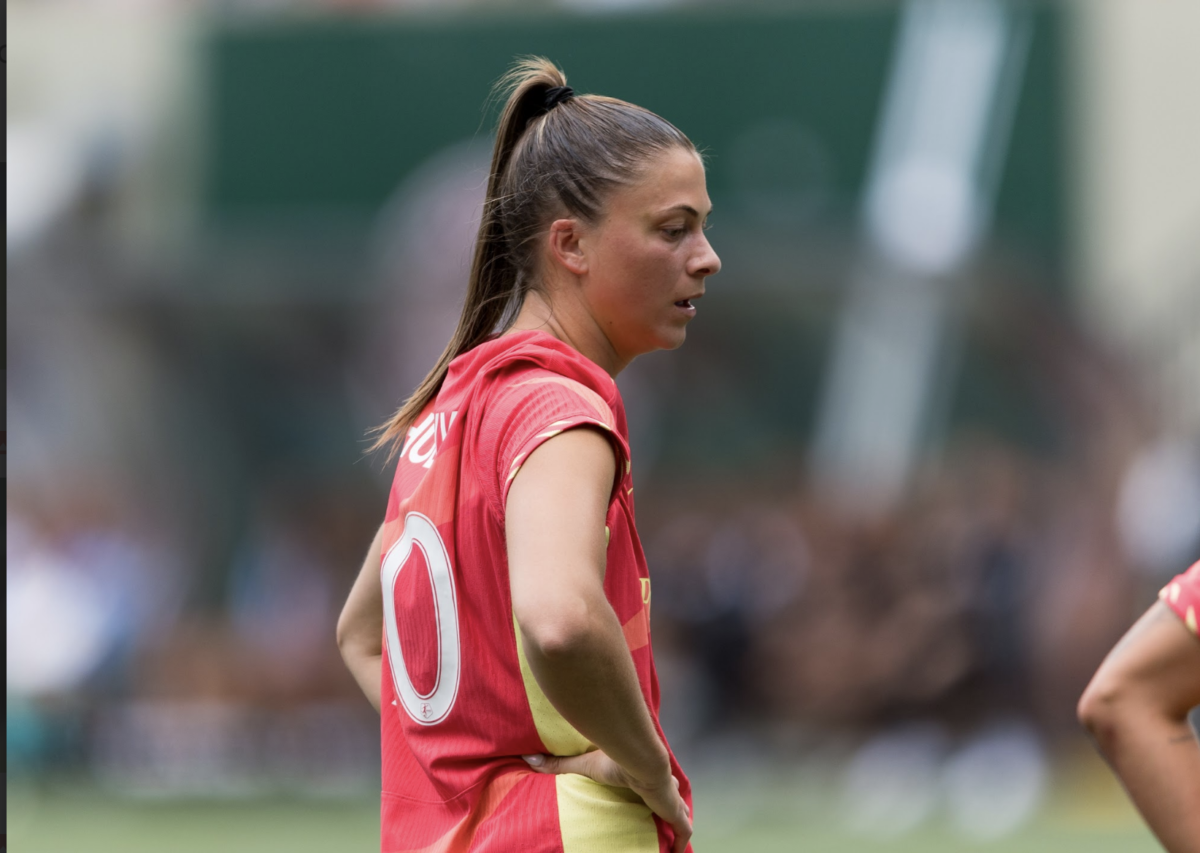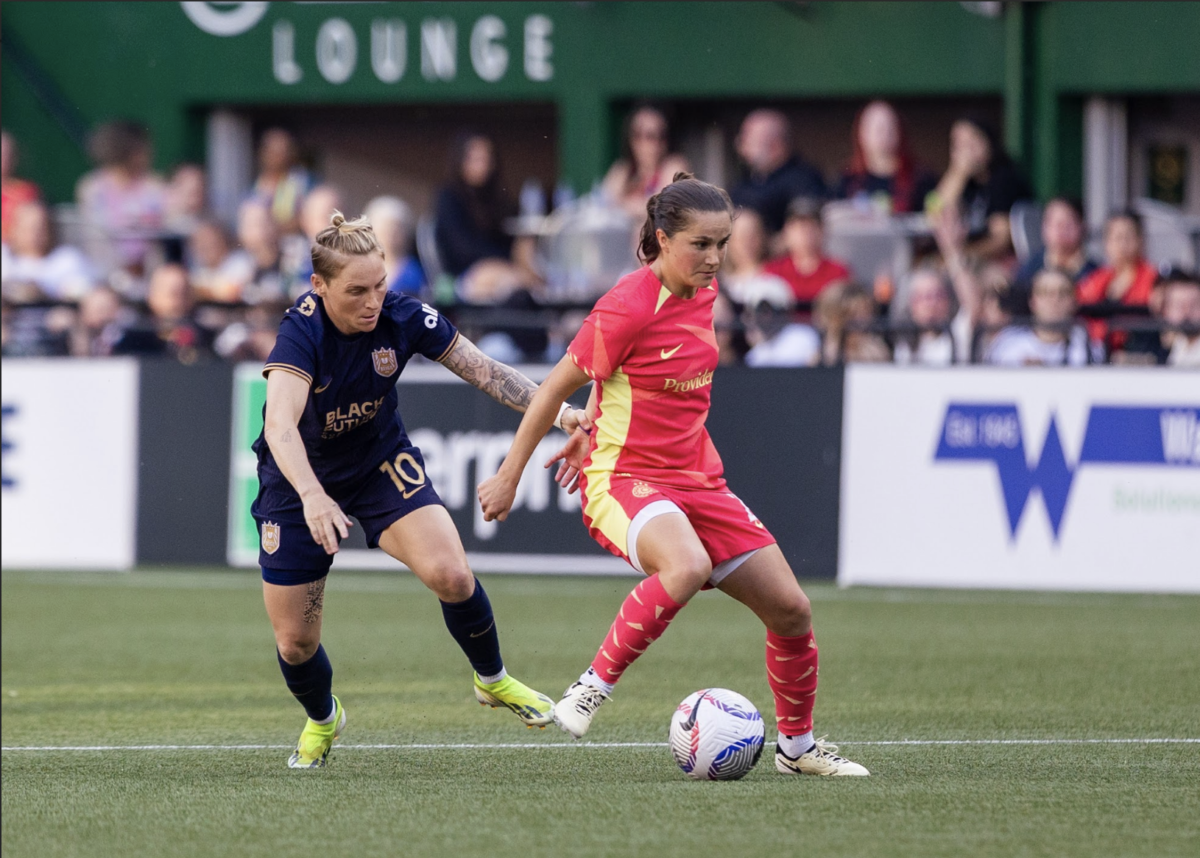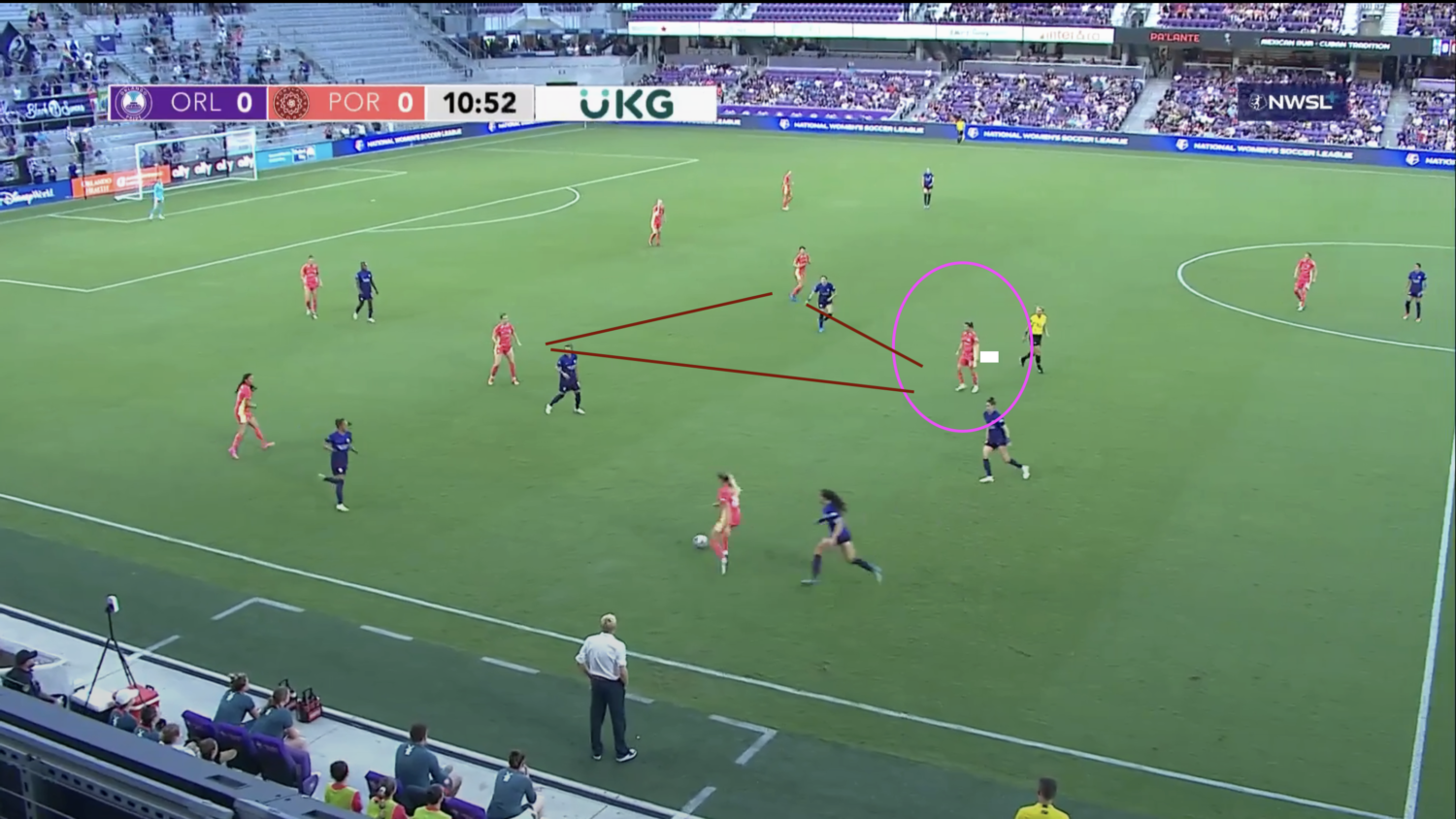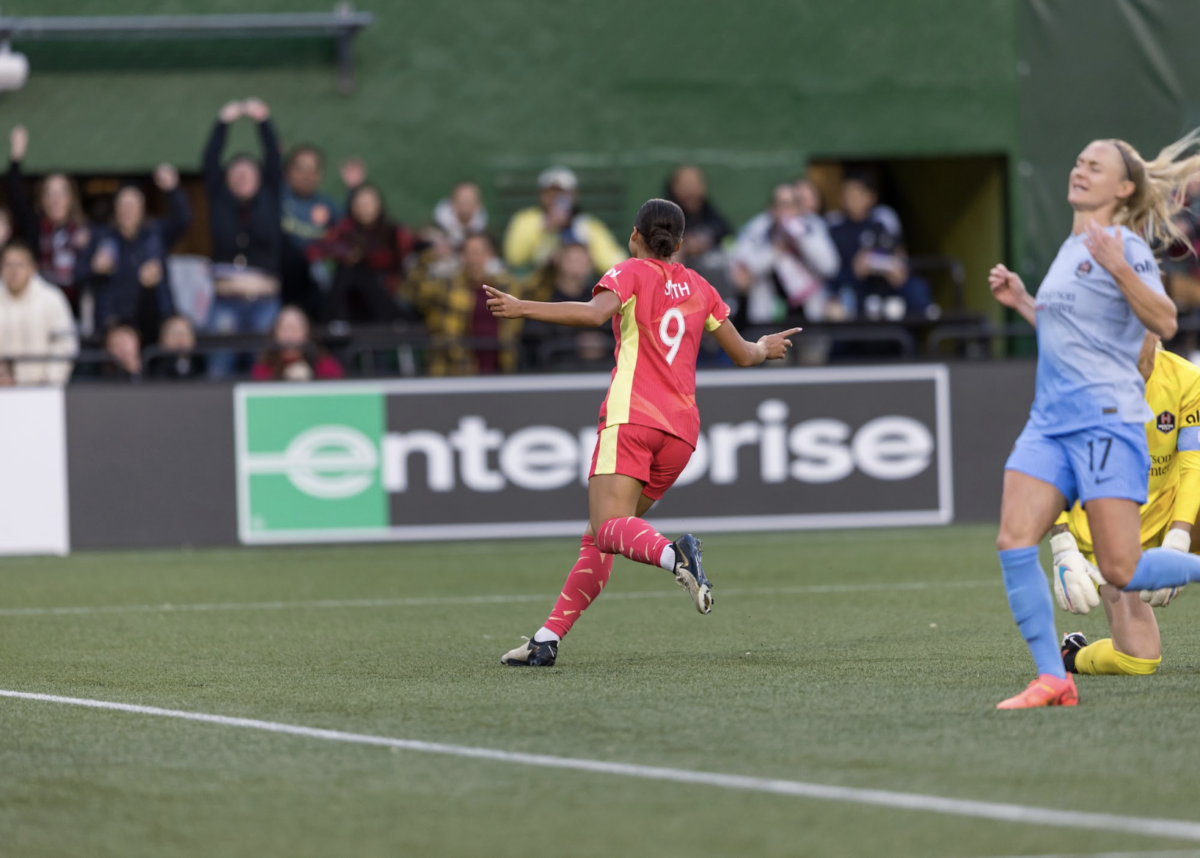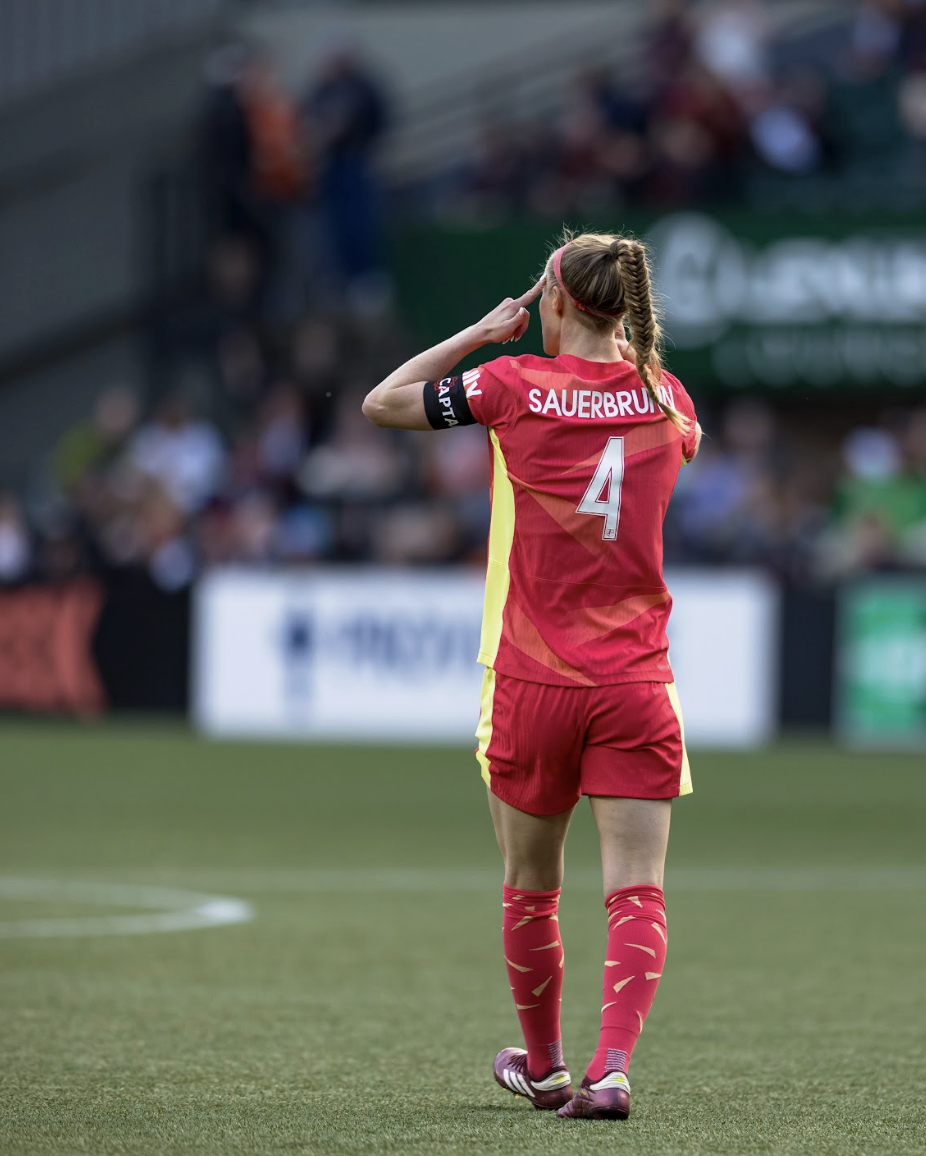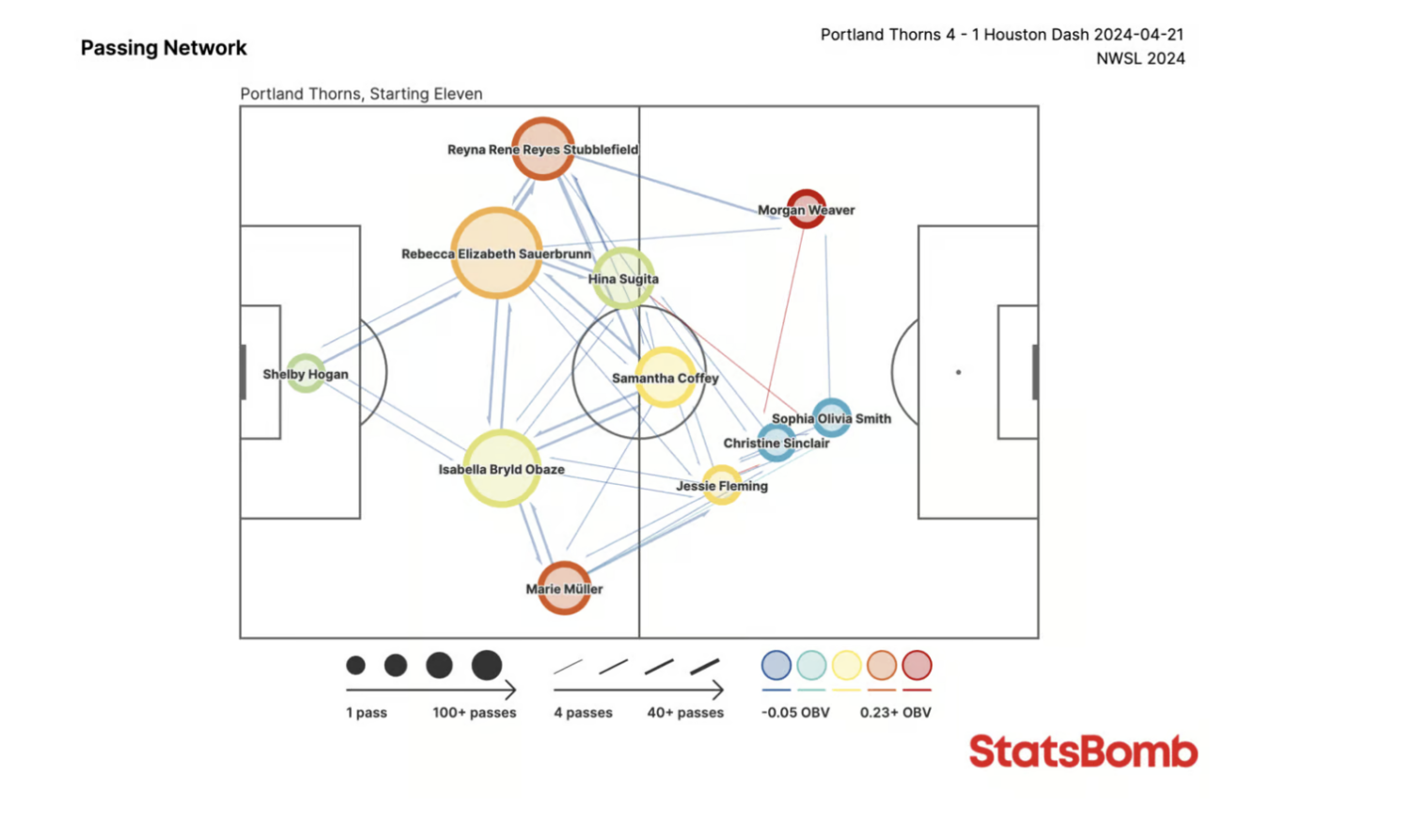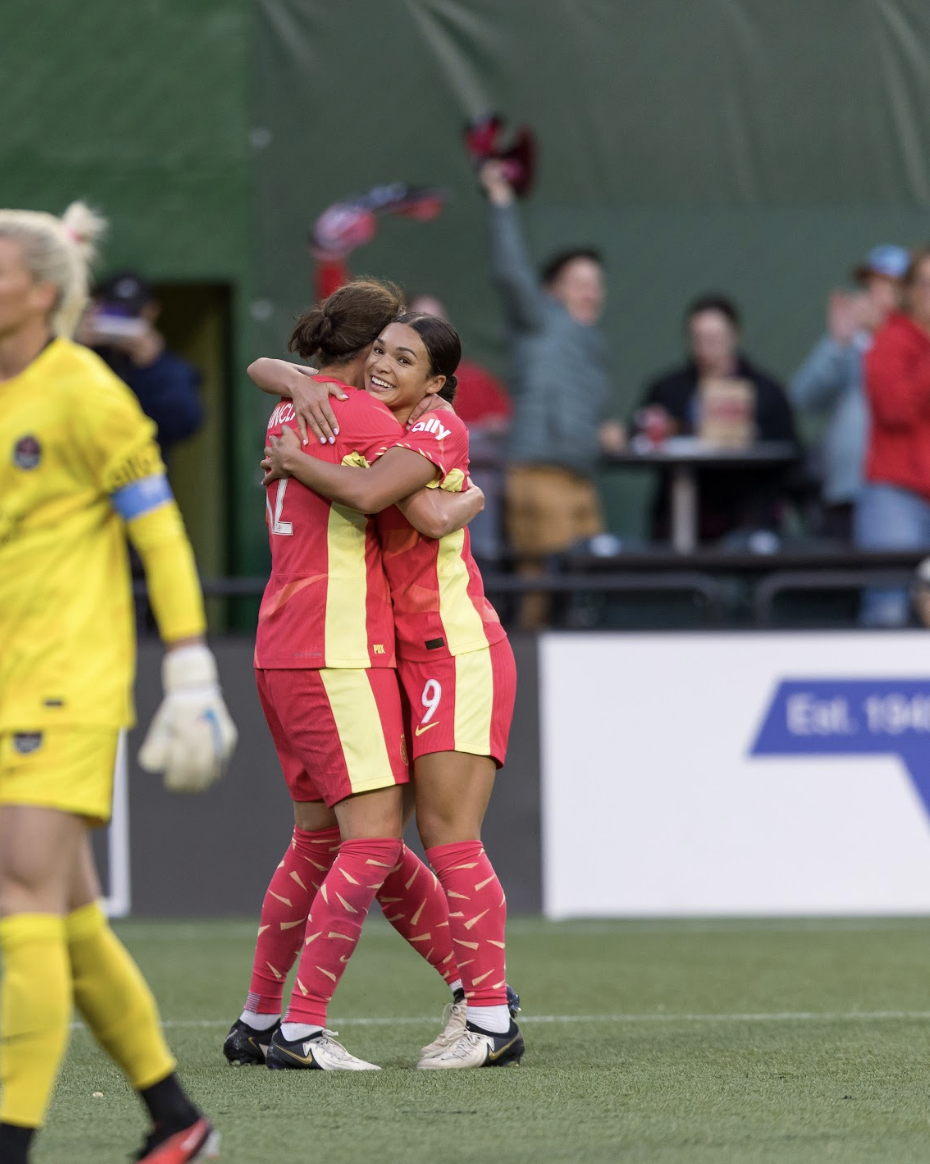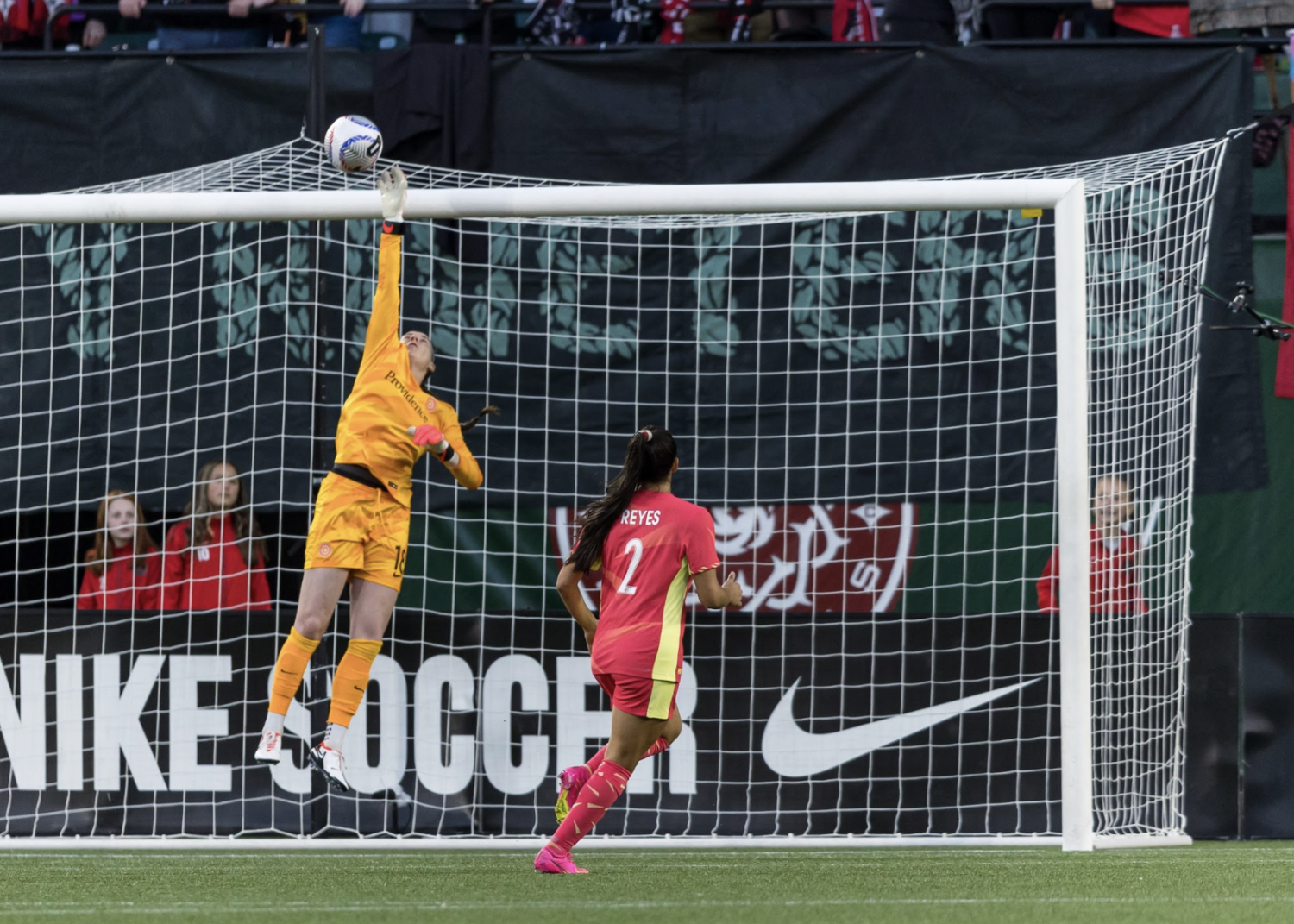It’s hard to write about a soccer game when there wasn’t much soccer being played.
When the Portland Thorns faced off against Racing Louisville on Sunday afternoon, nobody expected that the referee would make himself the main character and the game would set an NWSL record for the most number of fouls in a game (41, compared to the 25 the previous Thorns matches averaged). Thanks to two penalties and a brilliant headed goal by Reilyn Turner, the Thorns managed to eke out a win. Jessie Fleming said it best postgame when she said it was “embarrassing for Louisville, and embarrassing for the league,” to allow such blatant fouling and disjointedness.
Coming to the end of a three-game-week, head Rob Gale rotated his starting lineup, resting the Thorns’ only true outside back Reyna Reyes, and starting Hina Sugita in the No. 6 defensive midfield position while Sam Coffey was in Spain at a family wedding. Coffey had previously been the only Thorns player to see every minute. Gale described her as a metronome who “sets the tempo.”
As part of his squad management on the back of a congested three-game-week, Gale said, “It’s foolish at this stage of the season to be huge with minutes. We have a lot of young players, players who were squad players, who aren’t used to playing this many minutes. It would be irresponsible of me to push them too hard now, and it would cost us down the line. Squad rotation is very important, and I want to keep the players pushing each other, so that when they step up, they are able to perform.”

Hina, who does best as a free-roaming midfield player that can operate in both boxes, was asked to sit deeper. This rotation fundamentally affects the ways in which the Thorns’ attacking buildup is created, as they lose Hina’s creative ability going forward. Not including the penalty kicks, the Thorns created 0.54 expected goals—an abysmal outing. Hina’s heatmap shows that she very rarely got forward centrally, forcing the Thorns to try and build through their wide players. The only problem: the Thorns’ wide players are not actually wide players.
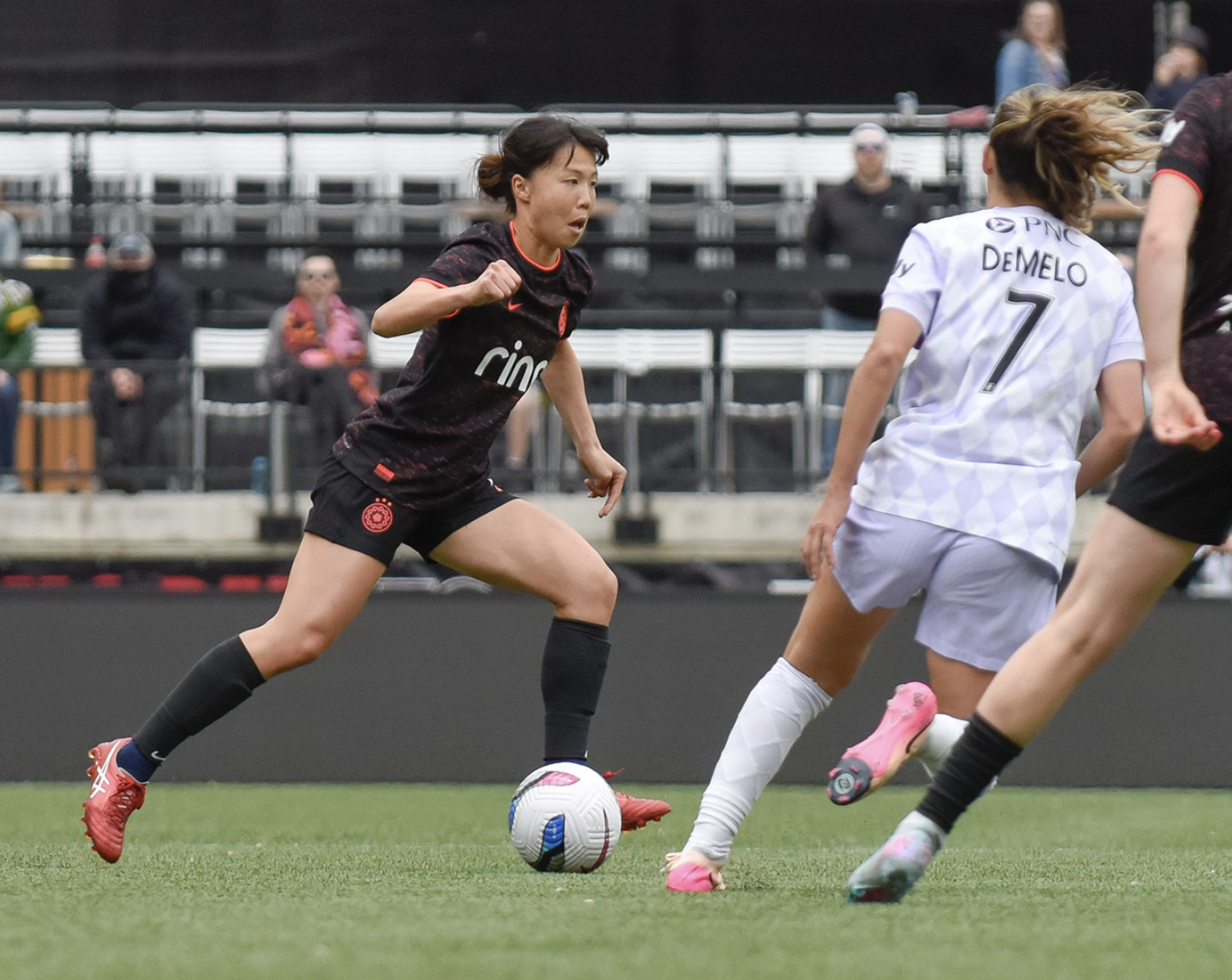
The Thorns’ unbalanced roster construction has been a problem for the past several seasons, but is really coming to a head due to the current number of long-term injuries on the squad. With only two true wingers (Payton Linnehan and Alexa Spaanstra), Gale has resorted to playing central forwards Caiya Hanks and Turner out wide instead. By asking these players to be out of position, he is mitigating their strengths. We saw what could happen when Turner is able to find herself centrally: she scores a headed goal between the backs of two defenders. Unfortunately, Gale seems to be stuck in the mindset that Deyna Castellanos is the Thorns’ best option centrally, which time and time again has proven to be unsuccessful.
The game quickly spun out of control as Louisville scored their second and third goal in quick succession, both of which were egregious errors by the Thorns. Off a goal kick when trying to play out of the back, Mackenzie Arnold and Jayden Perry had a lapse in concentration and made a bad pass that was easily picked off by Racing and placed in the back of the net. Louisville is a high-pressing team, relying on the speed and stamina of forwards like Emma Sears to maintain the press. When up against such one-note opposition, sometimes it’s necessary to change up your style of play. If you know that you’re going to be under intense pressure on your backline, it’s up to the coach to recognize that and change up the style of play, using Macca’s long-ball distribution to switch the way the Thorns’ progressed the ball—especially without Hina operating in the midfield the way she usually does.
The third goal allowed by the Thorns started with a foul in the build up on Isa Obaze that left her on the ground and Racing outnumbering Portland in the box. Had the ref been competent, he would have called the ball back, but he didn’t. Ball don’t lie, however, and the Thorns were handed a lifeline when they earned a penalty in the fifth minute of first half stoppage time, with Jessie Fleming calmly slotting it home for her first ever (!!!!) goal in a Thorns jersey.
With twenty fouls recorded in the first half, the Thorns went into the locker room down 2-3. Gale said that during his halftime speech, there “wasn’t much tactically to change at half time due to the physicality of the other team and the nature of the game. We needed to stretch them better in a low triangle and deal with service in the wide area and stop giving away set pieces, because that is what they play for. Louisville goes long, dives, gambles on pressure and tries to slow down the game and they are effective at it. We rotated [Olivia Moultrie] into Jessie’s position, and at the end we just went for it with five at top and pushed for it.”

In a statistic that seems unbelievable, the Thorns are the only NWSL team that have not conceded in the second half, so clearly something that Gale is doing at halftime is working. With the frequent starting and stopping of play, it was hard for either team to create much rhythm. The inexperience of the Thorns’ roster showed through, with no Coffey on the field to step up and reset the tempo and place the Thorns back in control. This is one of the downsides of having your captain be a keeper, as it’s hard for them to reset the tone of the game from the penalty box. And unfortunately, no one in the outfield stepped up.
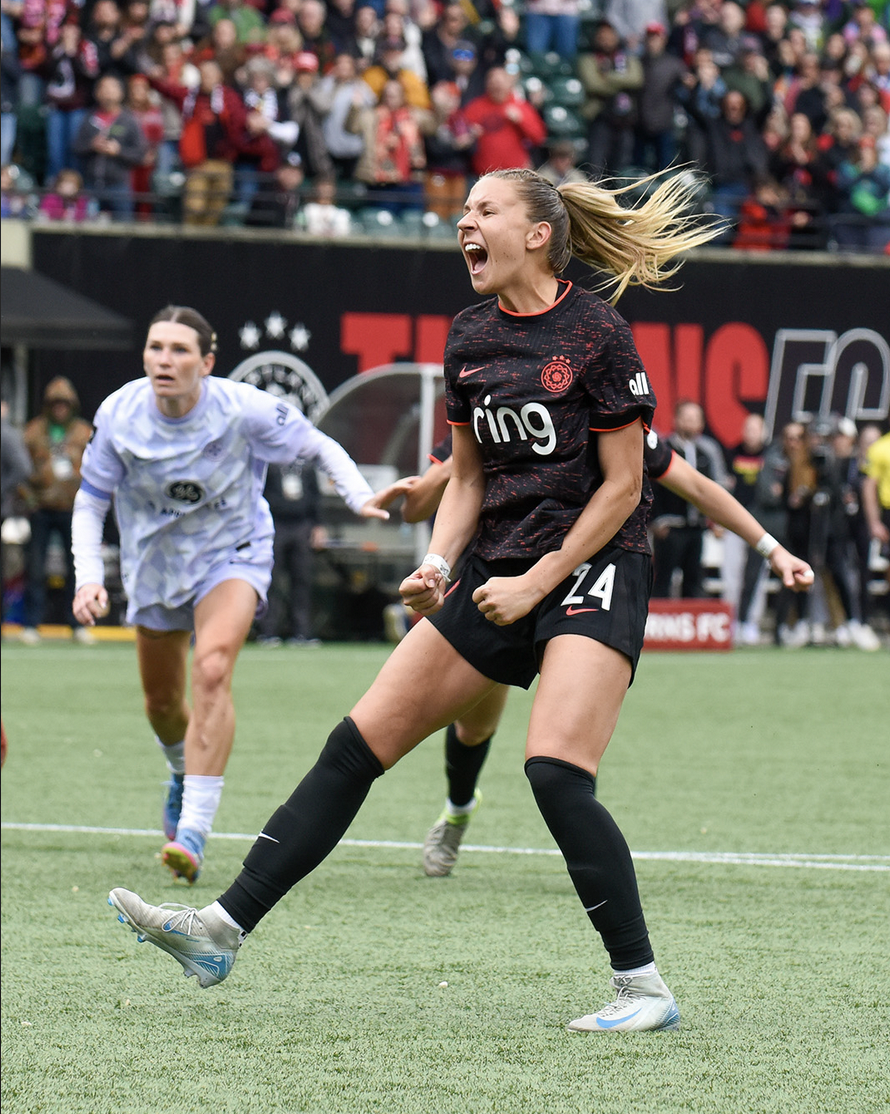
The biggest takeaway from the match, since there was hardly any quality soccer played by either side, is that Perry needs to be signed to a longer contract immediately. Her cool, calm, collected presence in the 100th minute to earn the team a point should be worth at least five years in a Thorns kit, in my opinion. If the front office wanted to signal that they were serious about a long term rebuild, this should be one of their first moves.

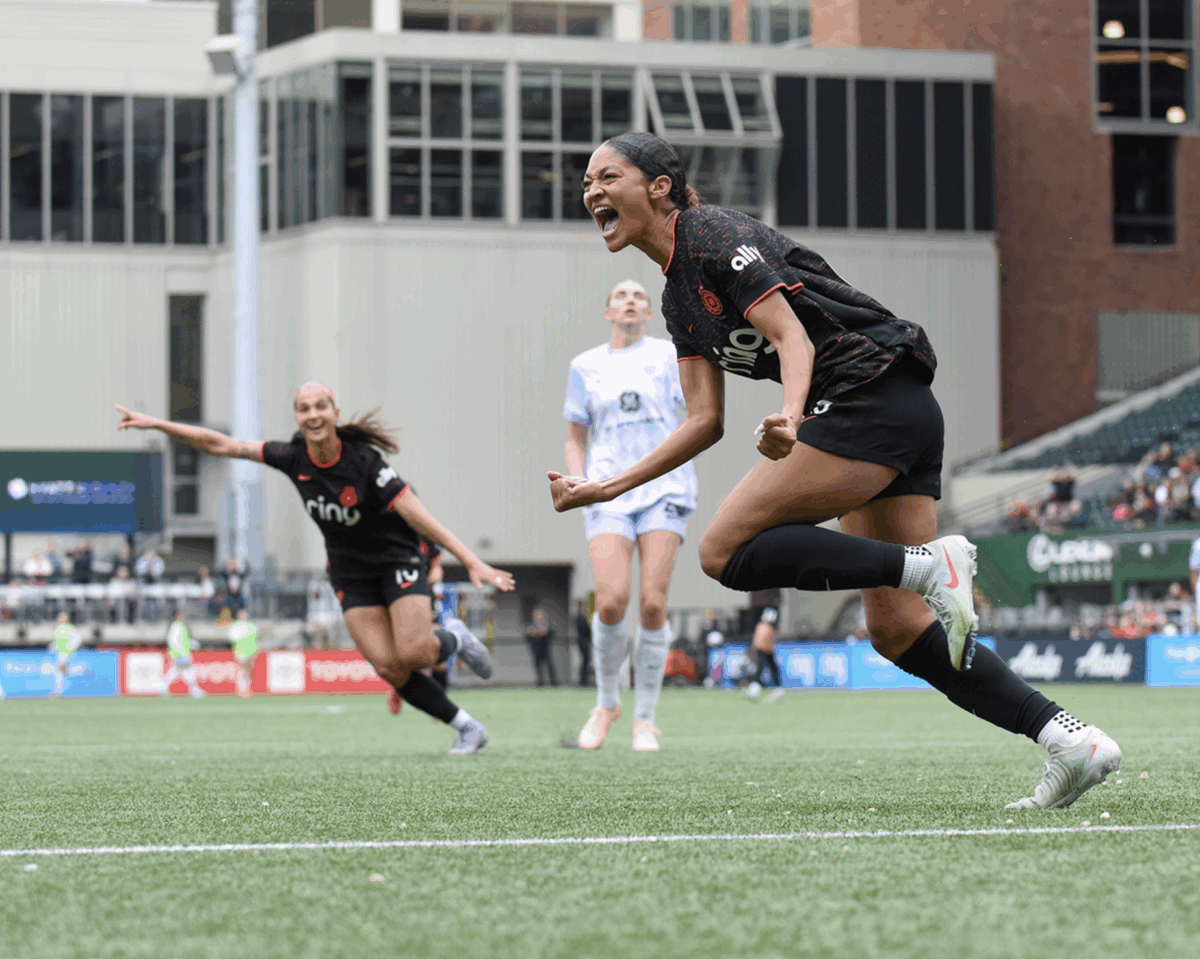
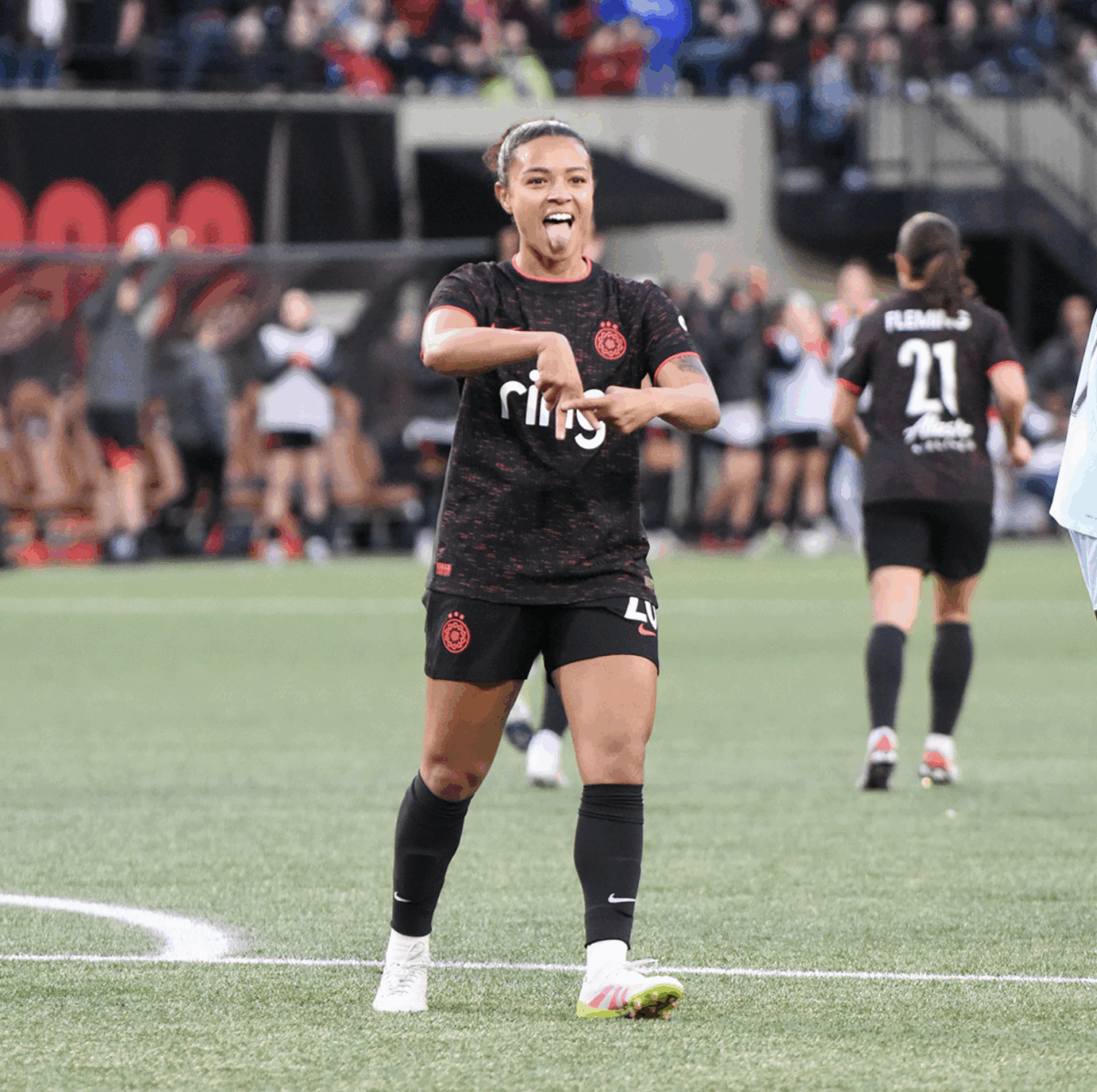
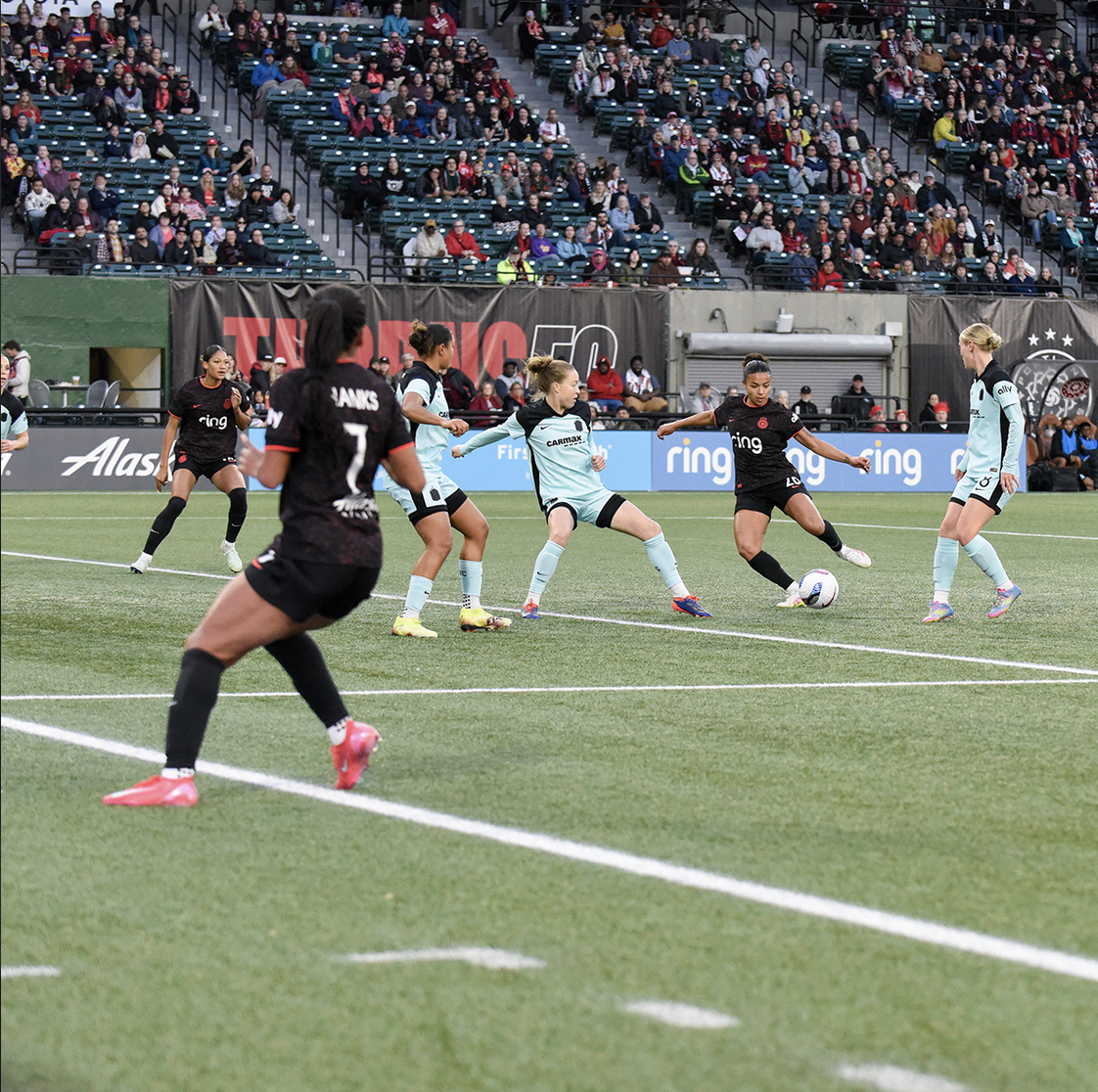
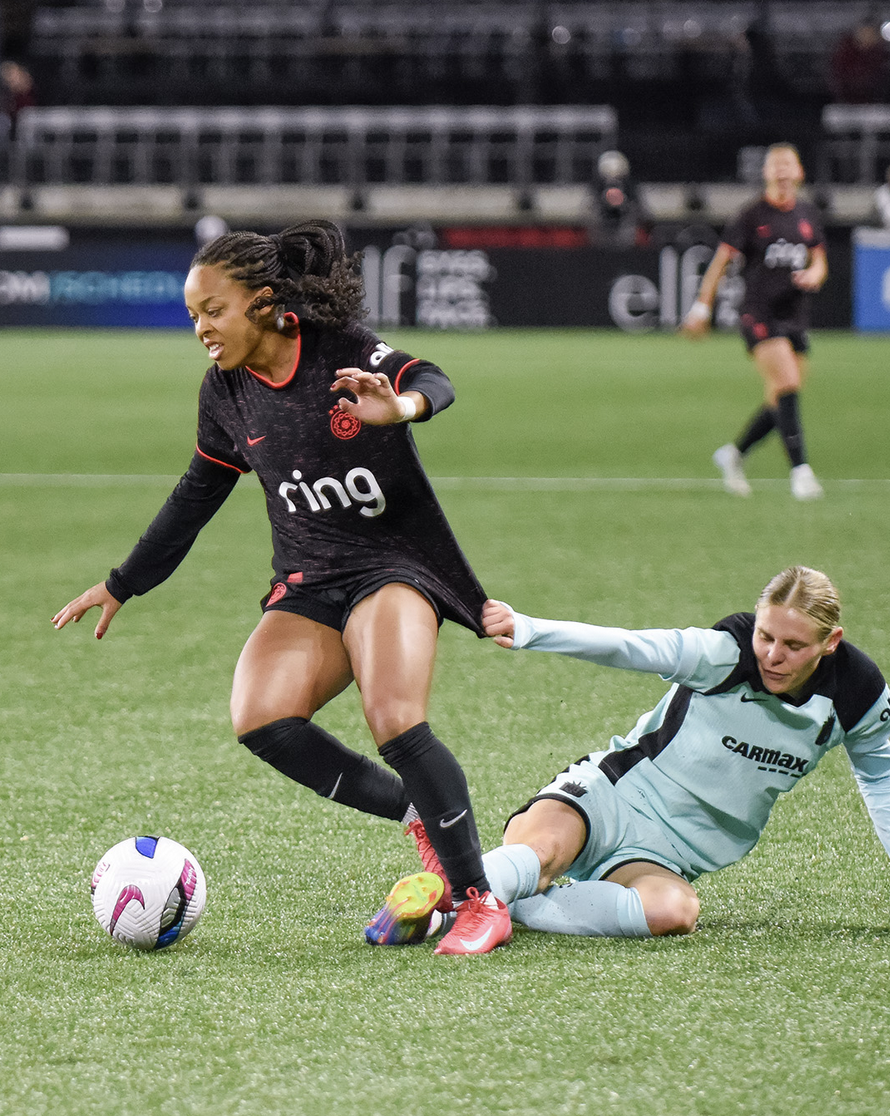
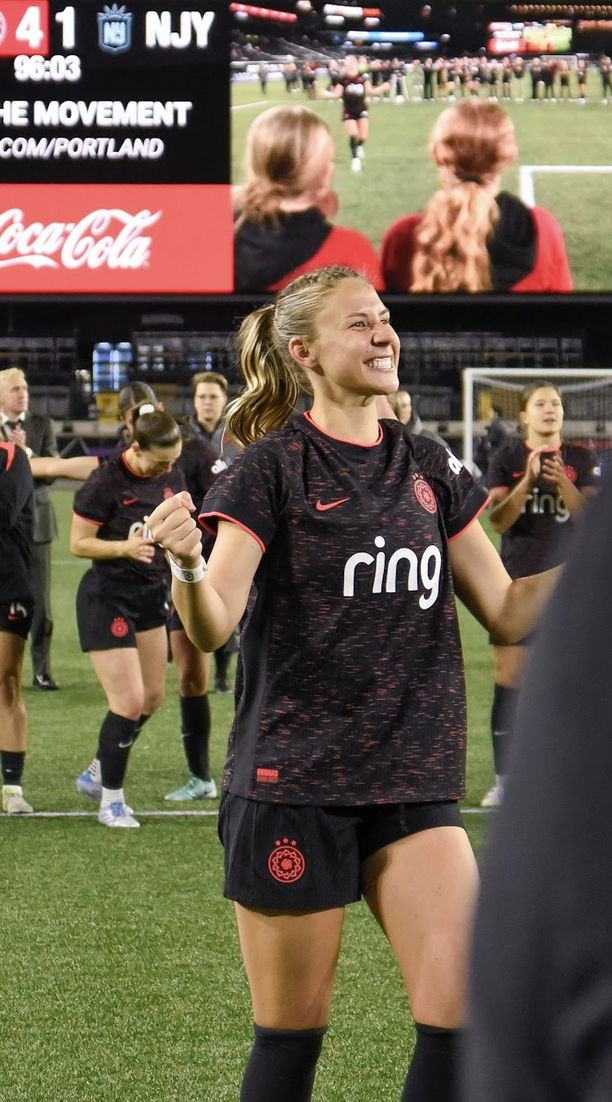

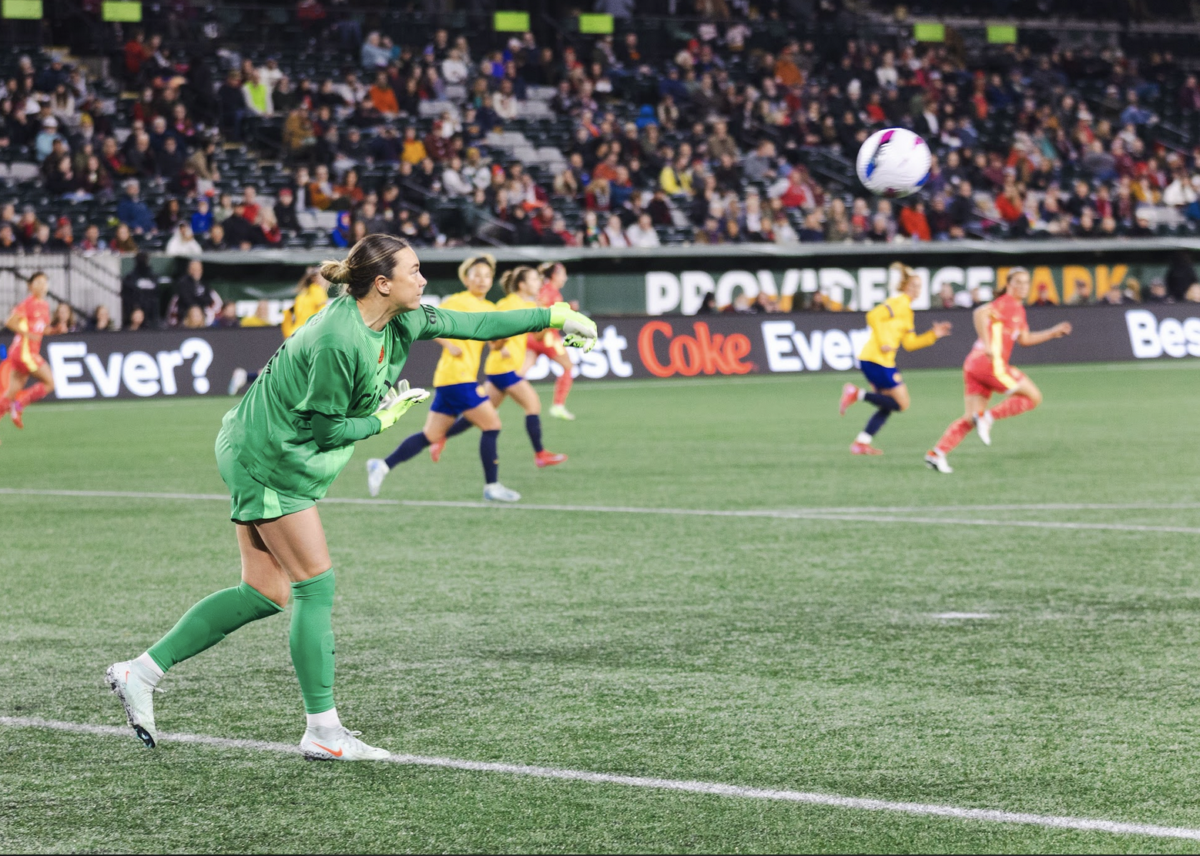
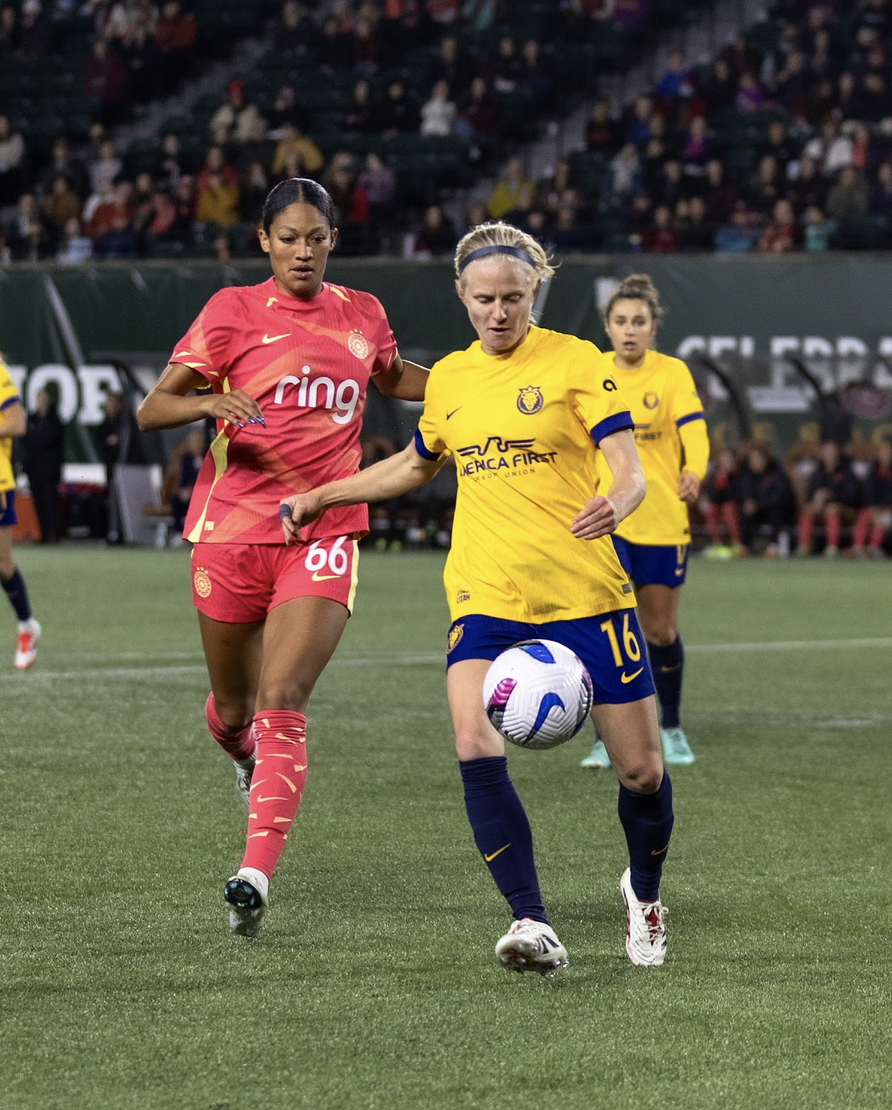
 Unlock with Patreon
Unlock with Patreon
